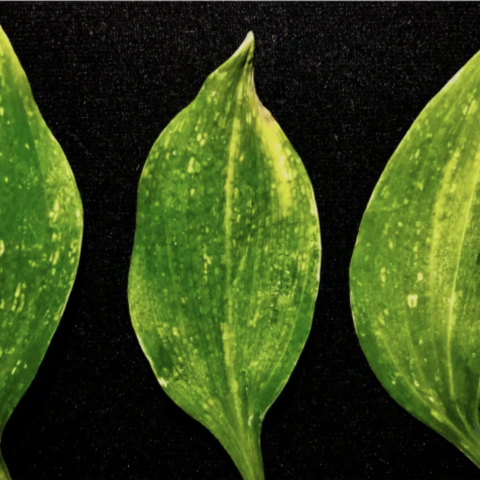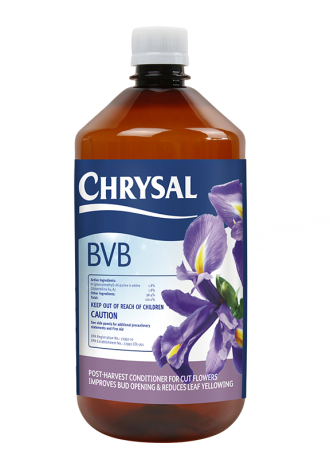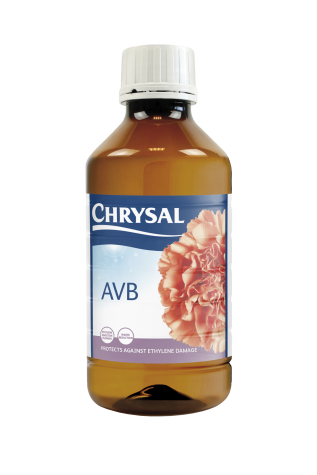Leaf Yellowing in Flowers: What Causes It and How to Stop It

Keep your greens green—from the farm to the vase.
You’ve seen it. You’ve probably sighed at it. The dreaded yellowing leaves on what should be a perfect bouquet.
Whether you’re a grower, bouquet maker, wholesaler, or florist, yellowing foliage is more than just a cosmetic issue. It’s one of the first signs that a flower is under stress — and it can mean the difference between “Wow, these are gorgeous!” and “Do you have something fresher?”
So, what’s really happening behind the scenes? And more importantly — how can you stop it?
Understanding the Science Behind Yellowing
Leaf yellowing (chlorosis) is one of the most visible signs of stress and senescence in cut flowers. It often starts soon after harvest and can progress rapidly during transport, storage, or vase life.
When a flower is cut, it loses its connection to the plant’s nutrient and hormone system. Without the steady supply of growth hormones like cytokinins and gibberellins, chlorophyll begins to break down — turning those once-vibrant green leaves yellow.
Adding to the challenge is ethylene, a naturally occurring aging hormone that speeds up senescence. Ethylene may come from the flowers themselves (under stress) or from external sources like ripening fruit, vehicle exhaust, or decaying plant matter. Flowers like alstroemeria, lilies, and carnations are especially sensitive, showing symptoms like yellowing, bud drop, and reduced vase life.
Nutrition and Hormonal Support: The Two Keys to Prevention
The good news? Leaf yellowing can be prevented — or at least dramatically slowed — with the right care strategies.
Two major approaches work hand in hand: hormonal balance and nutritional support.
• Hormonal Support:
Treatments containing gibberellins or benzyladenine help delay leaf yellowing and maintain chlorophyll. These growth regulators “remind” the flower that it’s not done being beautiful, stabilizing its natural hormone balance.
• Nutritional Support:
Sucrose-based flower food provides the energy flowers need for healthy metabolism, water uptake, and vase performance. Proper feeding also helps reduce microbial growth and keeps water clean, further preventing stress-related yellowing.
Chrysal’s Proven Solutions
At Chrysal, we’ve developed a range of post-harvest and vase-life products that tackle yellowing from every angle — from the grower’s bench to the consumer’s vase.
Chrysal BVB Pre-Treatment
Formulated for bulb flowers like tulips, lilies, irises, and alstroemeria, BVB helps prevent leaf yellowing, reduces stem elongation, and promotes strong bud development — even after long storage or transport.
Perfect for growers and bouquet makers.
Chrysal SVB Tablet
A convenient ethylene blocker and bud stimulator in tablet form. SVB maintains green foliage and encourages bud opening in sensitive flowers such as lilies and alstroemeria.
Works best when paired with AVB.
Chrysal AVB
A liquid post-harvest treatment that supports hormonal balance, improves water uptake, and strengthens resistance to yellowing during storage and shipping.
Use with SVB for maximum effect.
Chrysal Ethylene Buster
Neutralizes ethylene gas during transport and storage, protecting flowers like carnations, lilies, and alstroemeria from premature aging, leaf yellowing, and bud drop.
Ideal for shipping and wholesale environments.
Chrysal Flower Food
At the retail and consumer level, our clear flower food provides essential nutrients, keeps vase water clean, and supports vibrant green foliage all the way to the end.
Because healthy flowers make happy customers.
Why It Works
• Hormonal Correction:
BVB, SVB, and AVB restore the balance of natural hormones disrupted by harvest.
• Ethylene Protection:
Ethylene Buster blocks aging gas that accelerates yellowing and bud drop.
• Nutrition & Clean Water:
Flower Food supports metabolic function and hydration for fresher leaves.
• Consistency Across the Chain:
A seamless care system from farm to vase means longer-lasting flowers and happier customers.
Final Thoughts
Leaf yellowing isn’t just a cosmetic issue — it’s a quality concern that affects perception, vase life, and customer satisfaction.
By understanding the science and applying the proper post-harvest care — like Chrysal BVB, SVB, AVB, Ethylene Buster, and Flower Food — floral professionals can keep every bouquet looking lush and vibrant from start to finish.
✨ Want to learn more or develop a protocol tailored to your specific crops?
Contact your Chrysal representative — we’re here to help you keep your greens looking their best.
Prefer a Printable Version?
If you’d like to keep this article handy or share it with your team, click here to download the PDF version.

Yasmanis Quintana - E-Commerce Manager - Chrysal Americas
As E-Commerce Manager for Chrysal, he leads initiatives that enhance the company’s online presence and connect professional florists and flower enthusiasts with sustainable, high-quality floral care solutions.
With over ten years of experience merging logistics, marketing, and customer experience, Yasmanis brings a data-driven yet creative approach to every project. Based in Miami, he’s passionate about bridging tradition and technology — ensuring Chrysal’s innovations reach more people while upholding the company’s commitment to sustainability and excellence in flower care.





